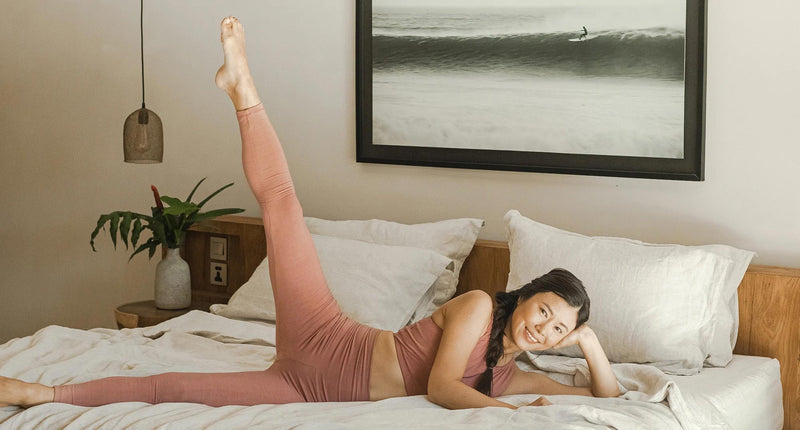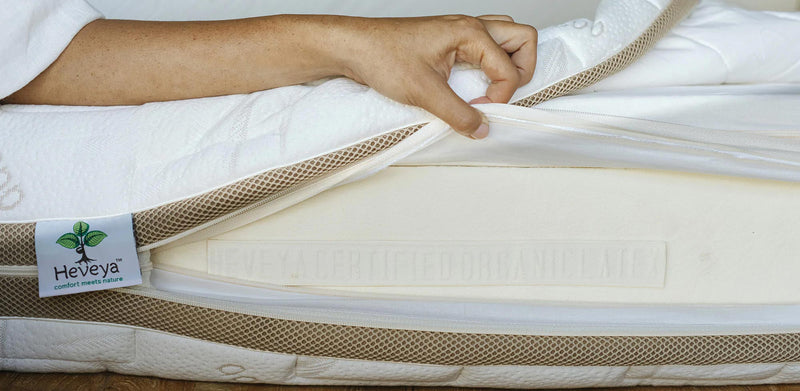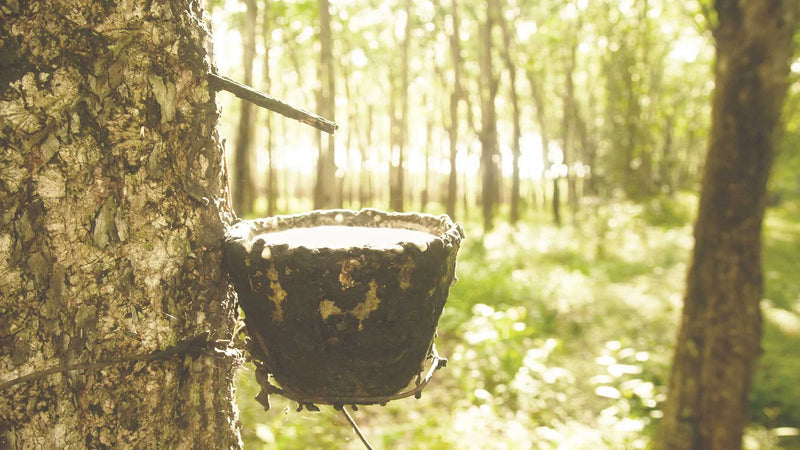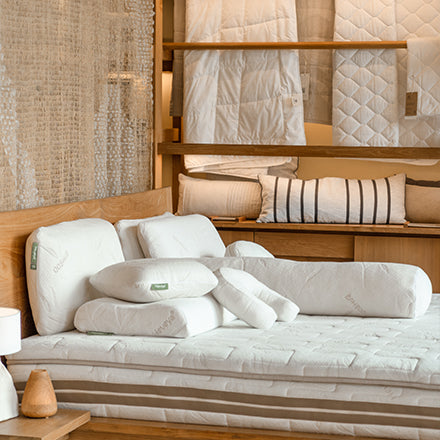Do you sleep on your side? If so, then your mattress needs to fulfil certain considerations to ensure you get the best night's sleep. Unfortunately, it's all too easy for side sleepers to wind up with shoulder pain or hip pain if their mattress isn't well suited to this sleeping position - and most mattresses aren't. Let's take a look at some of the unique problems with a side sleeping position, and what you need in a mattress if you're a side sleeper.

What happens to your body position when sleeping on your side?
Firstly, remember that it's almost impossible to maintain a perfectly symmetrical side sleeping position. When you lie on your side, your top leg will 'fall in' toward the mattress to rest on it, twisting your hips. When that happens, it's natural for your top arm and shoulder also to fall toward the mattress, as there would be no other source of support for it. The lower arm may either be tucked under the body or extended upward near the pillow.
It is important to note that while you may think of a side sleeping position as a symmetrical 'leg-on-leg' position, in reality it's not that way. Instead it should be imagined more as an inward-turned position, where the sleeper is turning in toward the surface of the mattress.
What are some of the problems with a side sleeping position?
A side sleeper puts a lot of pressure on his or her shoulder and hip closest to the mattress, which can cause discomfort. Adding to that problem is the twisting of the hips and shoulders described above, which prevents the body from forming a natural alignment.
If side sleeping is so bad, should I consider switching sleeping positions?
There are many sleeping positions. It certainly doesn't hurt to try other positions, but odds are if you're a side sleeper then that is the position that feels most natural to you. In that case, you may not benefit by switching to another sleep position: it won't feel natural and therefore it may be harder to get to sleep and stay asleep in the new position. Each sleep position has its own set of pros and cons - there is no 'perfect' sleep position.
Instead you may therefore wish to concentrate on transforming your side sleeping position into the most comfortable sleep experience possible.
Some people have to sleep on their side
Besides those who prefer to sleep on their side, you may be among the individuals who need to sleep on their side due to a medical condition. For example, pregnant women beyond the first trimester should avoid sleeping on their stomach or their back - leaving only the side sleeping positions available to them. Another example is that those who suffer from heartburn are recommended to sleep on their left side. And those who snore tend to get relief from sleeping on their side.
Whether or not you have much choice about sleeping on your side, the good news is that there is a lot you can do to ensure your mattress delivers the high quality of sleep you are seeking.
Softness vs firmness

There is no hard and fast rule about the level of firmness you need, as it will vary from one side sleeper to another.
But as a general rule, most side sleepers will need a mattress which is no firmer than a medium-firm. The reason for this is that side sleepers have a lot of contact with hips and shoulders, and on a firm mattress are more likely to wind up with back and shoulder pain due to these pressure points. In contrast, a softer mattress is more supportive for a side sleeper because it allows the shoulders and hips to sink into it, while the side of the body is supported by the mattress. This results in more contact between the side of the body and the bed, without placing uncomfortable pressure on the hips and shoulders.
Mattress material
Side sleepers need a mattress with unique properties of yielding to the touch, yet still being firm and supportive. This allows shoulders and hips to sink into the mattress while maintaining proper spinal alignment.
Overall, the best choice you could make is a latex mattress, because it is a solid block of luxurious foam which allows a 'sinking in' while still offering good support for the spine.
A second choice would be memory foam, but the main problem is that memory foam tends to 'sleep hot' - and you certainly don't want that in the warm Singapore climate. The worst choice for a side sleeper is a spring coil mattress, because you end up sleeping 'on top' of the mattress, creating hard hip and shoulder pressure points and preventing proper spinal alignment. In contrast, latex will allow the hips and shoulders to sink in softly, so there will be no uncomfortable pressure points.
Other tips for side sleepers
- Neck support is important. A good pillow for a side sleeper should be firm enough to give good support to the head and not let it sink down too much. A dense and supportive pillow is best, and it also needs to be thick enough that the head remains level with the spine. A latex pillow is an ideal choice to fulfil these requirements. Additionally, you'll love the extra comfort you'll get with a latex pillow. This is not the most common type of pillow that people get, but it does offer the best for relaxation.
- Use a bolster or body pillow. It is a good idea to minimize the amount of twisting that the hips are doing. Hugging a body pillow or bolster helps to support your body and maintain a proper spinal alignment. If you don't have a bolster, positioning a pillow between your knees also can help your top leg to rest on your bottom leg. This can avoid, or at least drastically decrease, the amount of hip twisting going on, allowing you to sleep in a more comfortable position.






